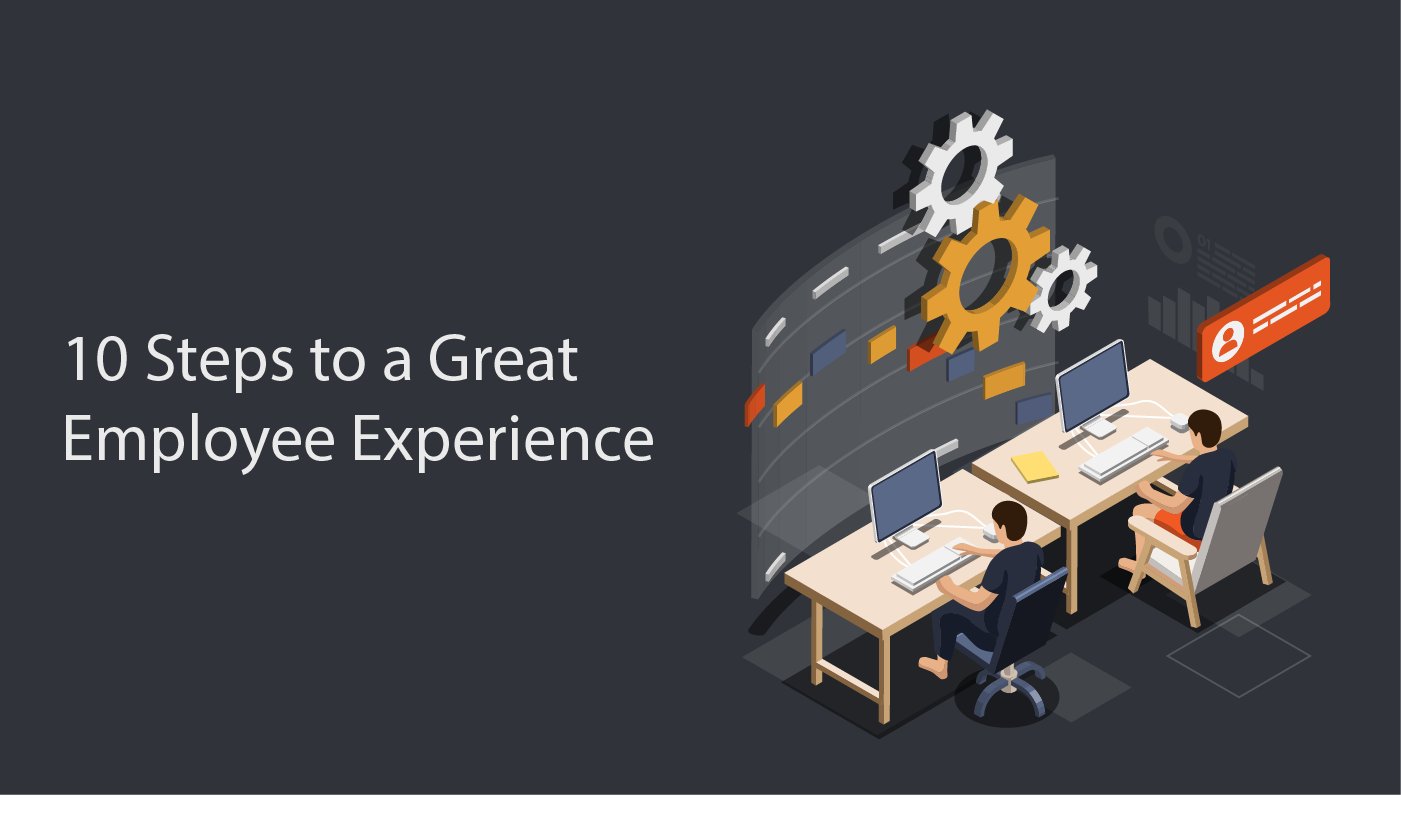It’s without any doubt that many organizations have come to the realization that in order to attract and retain great talent, they have to focus a big part of their efforts on the employee experience (read more here): creating an inspiring environment in which people can excel.
Employees have more power, influence, and choices than ever before and many of them don’t realize it yet. Recruiting and retaining the right talent in your organization is key, not seeing people as interchangeable parts, but as a respected and key part of the organization’s success.
But where do you start? Let’s look at some proven steps to setting up great Employee Experiences in your organization:
1. Define your focus by using the Employee Life Cycle (ELC)
The ELC shows the phases of the employee’s relationship with your organization from their point of view. It’s a high-level view of the different stages an employee is going through in relation to your company. It is not always linear.

You cannot and should not change everything at once. Focus on those stages that bring the most value to the employee and to the organization.
2. Form cross-functional teams
The design of the Employee Experience is neither the responsibility nor the privilege of HR alone. HR should be included, but so should most other functions be represented, taking also into account diversity in age, background, nationality, expertise, etc.
3. Map the Employee Journey(s)
To effect meaningful change and design a better Employee Experience, you need to map the Employee Journey. Based on the focus you defined in step 1, now go ahead and map the specific employee journey with your cross-functional team. Walk in the shoes of your (potential) employees as he or she interacts with your organization.
4. Design the desired Employee Experience
Dream. Imagine what the future Employee Experience ideally looks like for your organization. Create your ideal state, taking into account the insights generated earlier.
5. Define the main challenges
Now you know which needs employees to want to fulfill and which work they want to get done, and how they feel at each step of their journey with you. You also have an inspiring vision of what kind of experience you want to achieve. It’s time to define the main challenges now. What are the obstacles on your road, what needs to be addressed?
6. Solve your challenges
Creatively look for solutions to close the gap between your current state and your desired one. Co-create solutions not only with your cross-functional team but involve more people and end up with multiple ideas and concepts.
7. Prototype & Test Solutions
Prototype your chosen solutions and find ways to test them and to test assumptions you’ve made along the way. Generate feedback on your prototypes and look for those solutions that work best for your organization, based on predefined criteria.
8. Implement new concepts
Once you know which prototypes finally work, you can plan to implement the concepts you’ve chosen. Depending on the size of the concept, a project team might be formed with a clear roadmap and plan.
9. Learn what works and what doesn’t
Once launched, the work isn’t finished. Make sure to plan moments of evaluation and feedback. Resistance to the change ánd success stories needs to be captured and dealt with, to increase the speed of adoption.
10. Continuously Improve your solutions
Based on your evaluation, make the changes needed and adapt your concepts or plan. The goal is not to prove you’ve got the right concept right away, the goal is to improve the employee experience. If a solution finally doesn’t work, go back to your drawing board, improve it, or finish it altogether.





